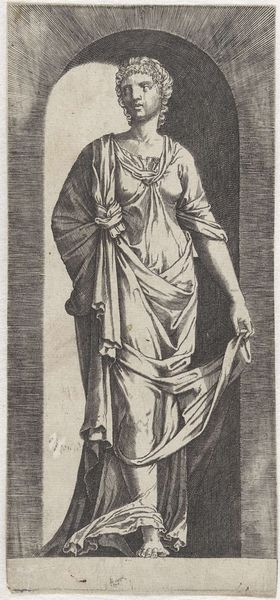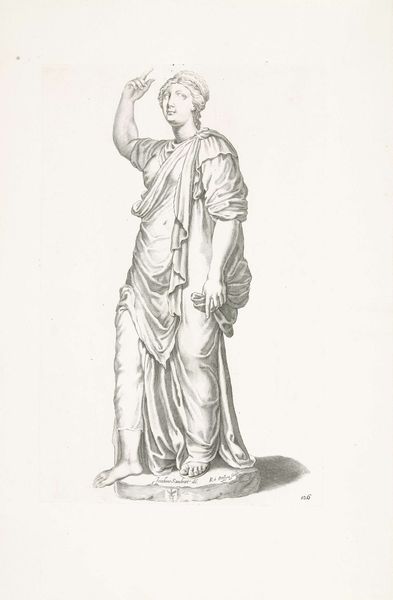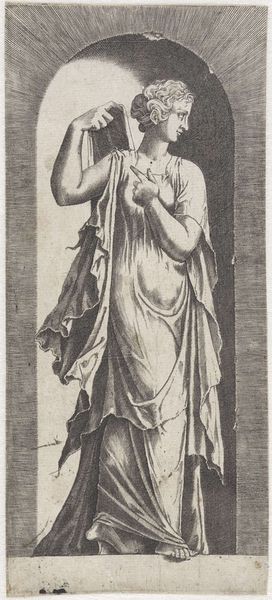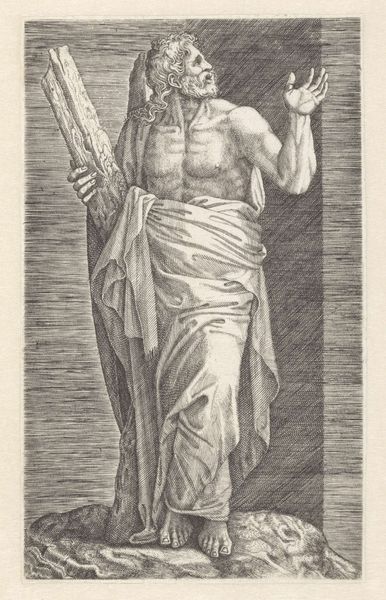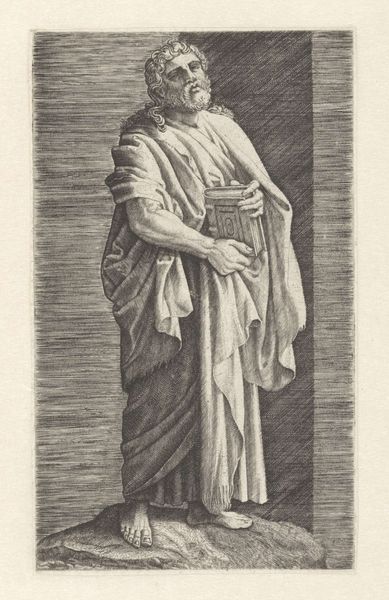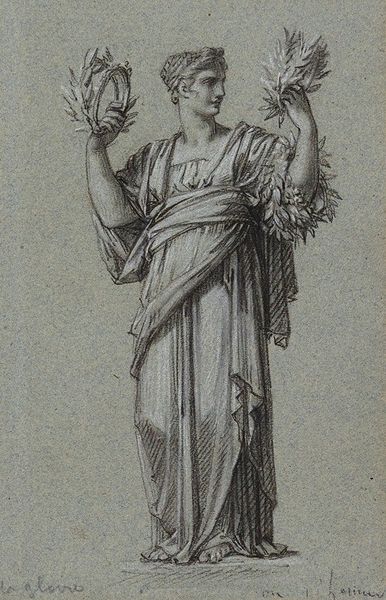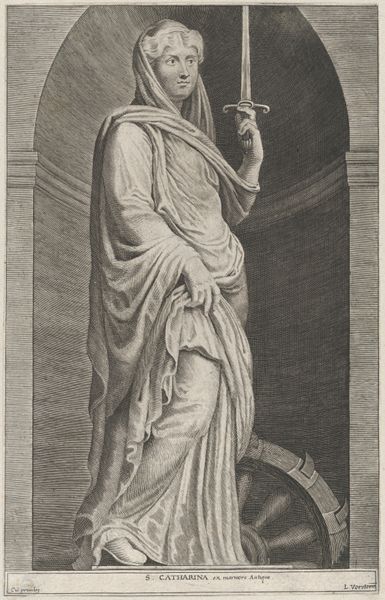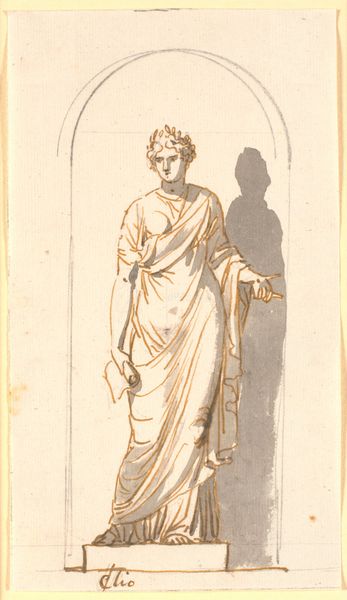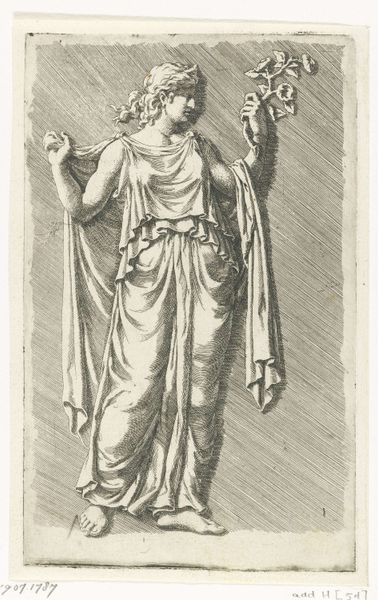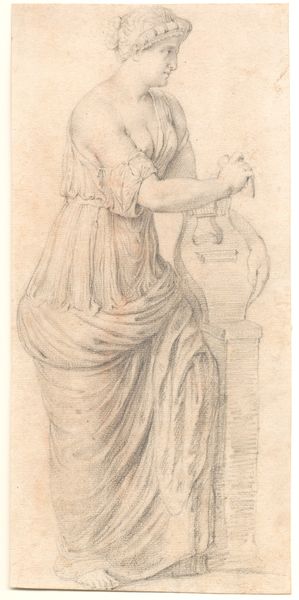
Standbeeld van een Abundantia met een hoorn des overvloeds 1750 - 1793
0:00
0:00
drawing, tempera, paper, ink
#
portrait
#
drawing
#
neoclacissism
#
tempera
#
classical-realism
#
charcoal drawing
#
figuration
#
paper
#
ink
#
pencil drawing
#
portrait drawing
#
portrait art
Dimensions: height 294 mm, width 176 mm
Copyright: Rijks Museum: Open Domain
Etienne de Lavallée-Poussin created this drawing of Abundantia, the Roman goddess of plenty, using pen and brown ink, and brown wash. The goddess is depicted as a classical sculpture, holding a cornucopia overflowing with fruits, signifying abundance and prosperity. During the 18th century, there was a revival of interest in classical antiquity, driven by archaeological discoveries and scholarly studies. Artists like Lavallée-Poussin found inspiration in ancient Roman and Greek art, incorporating classical elements into their work. This renewed interest was also fueled by the establishment of art academies and museums, which promoted the study and appreciation of classical art. Lavallée-Poussin, working in this environment, would have been keenly aware of the artistic and intellectual currents of his time. A drawing like this reflects the era's fascination with antiquity but also serves as an artifact of the artistic training and institutional structures that shaped artistic production in 18th-century Europe. By studying such works, alongside archival documents and historical texts, we gain a deeper understanding of the complex interplay between art, culture, and society.
Comments
No comments
Be the first to comment and join the conversation on the ultimate creative platform.

